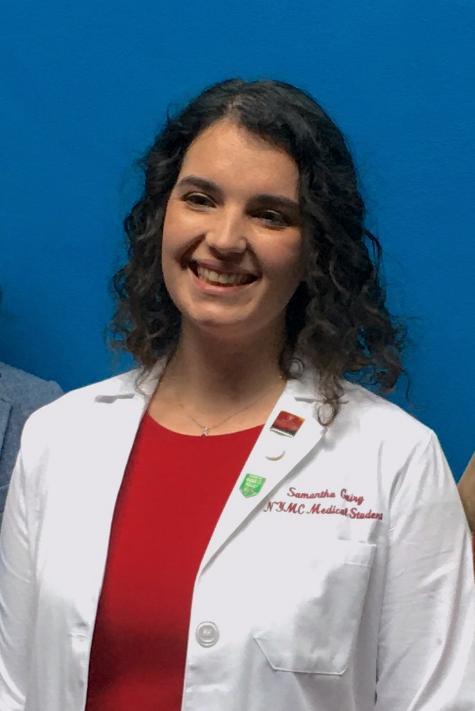New Imaging Technique Shows Great Promise in Predicting Outcomes of Patients with Glioblastoma
NYMC student Samantha Guiry co-first authored the new study published in the Journal of Neuro-Oncology

Glioblastoma (GBM) is the most common malignant primary brain tumor, with a median survival of just15 months despite an aggressive treatment regimen. Using the new imaging technique quantitative susceptibility mapping (QSM) to combat this highly aggressive and often fatal brain tumor has shown great promise for predicting patient outcomes in a new study, recently published in the Journal of Neuro-Oncology that was co-first authored by Samantha Guiry, School of Medicine (SOM) Class of 2023.
“In its most fundamental definition, QSM is a measure of the degree of magnetization of a specific tissue when exposed to a magnetic field,” said Ms. Guiry. “For the study, we hypothesized that areas of tumor that are iron saturated have increased magnetic susceptibility. Increased iron in tumor tissue or surrounding tissue (the tumor microenvironment) has been demonstrated to correlate to tumor growth because iron is to some degree ‘tumor food’. Therefore, finding a noninvasive way to ascertain the iron content of the tumor via imaging could provide a better idea of how aggressive the tumor is and possibly how well it will respond to therapy.”
The study is the result of research which Ms. Guiry has conducted as part of a team of researchers at the Hospital of the University of Pennsylvania (UPENN) since just before beginning medical school at New York Medical College (NYMC), alongside her research mentor Ali Nabavizadeh, Ph.D., assistant professor of biomedical sciences at UPENN.
“For the study, we delved into the two types of tumor-associated macrophages that interact with the tumor microenvironment,” said Ms. Guiry. “M1 macrophages store iron intracellularly and promote the anti-tumor inflammatory response, while the M2 phenotype releases iron in the tumor area, giving the tumor more to feed on. You could call M1s ‘good’ macrophages and M2s ‘bad’ in terms of the patient’s overall outcome.”
The team performed QSM imaging on all GBM patients in the study before they underwent tumor resection. During their surgeries, they collected biopsy samples from the excised tumor, which were then imaged using QSM techniques as ex vivo samples. They also used the samples for immunohistochemistry to obtain a quantitative measurement of the M1 and M2 macrophages in the tissue.
“Our results showed promising evidence for a correlation between increased susceptibility and tumor iron content. Areas with high M1 expression on immunohistochemistry (iron holders) also correlated with higher QSM values. These exciting initial results demonstrated a proof of concept that QSM may be used clinically in the future to predict patient outcomes for those suffering with GBM,” said Ms. Guiry. “We hope to move forward toward a larger, multidisciplinary study to continue to validate this method and move it into the practical clinical environment. Our work using non-invasive advanced imaging technique for glioblastoma prognostics could directly impact the medical care of future cancer patients, which makes me incredibly proud to be a part of Dr. Nabavizadeh’s team.”
